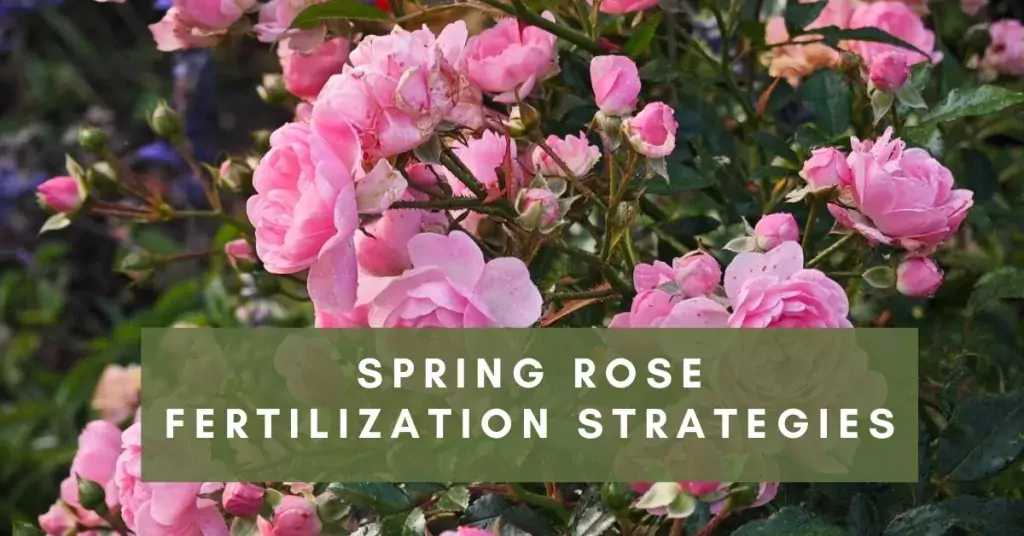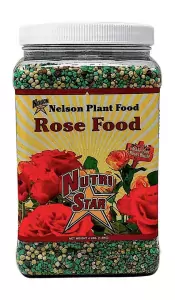Ah, the joy of spring, when nature awakens from its slumber, and so do our beloved roses. So, when should you start rose fertilization in spring? The key is to be patient and let them fully wake up. Once the danger of frost has passed and new leaves emerge, it’s game time.
Roses are hearty souls, but premature feeding might shock them. Aim for late March to early April, depending on your local climate. Observing your roses closely and waiting for those delicate green shoots will guide you perfectly. Think of it as a welcoming breakfast for your roses – timing is crucial for a delightful garden feast.
Waking Up to a Pest-Free Haven – Eradicating Garden Pests as the First Spring Action
Imagine your roses waking up to a pristine garden, free from unwanted guests. As a seasoned gardener, my first action as the roses stir is not just feeding them; it’s a preemptive strike against pests. These sneaky invaders can mar the beauty of your blossoms and hinder robust growth.
Start by inspecting the soil around your roses. Remove debris or fallen leaves, as they can harbor pests and diseases. Prune away dead wood and tidy up the garden beds. Consider introducing beneficial insects like ladybugs and predatory beetles, nature’s pest control squad. If a more aggressive approach is needed, eco-friendly insecticidal soaps can be your ally. Remember, a clean, pest-free environment is the canvas for vibrant rose growth.
Nurturing Roots: Tailoring Fertilizers to Your Rose Variety
Each rose variety is unique; just like us, they have their preferences. Choosing the right rose fertilizer tailored to your roses is the secret sauce for a flourishing garden. Let’s dive into the specifics.
Hybrid Tea Rose fertilization
Hybrid tea roses, the epitome of elegance, crave a balanced diet. A granular rose fertilizer with a balanced NPK ratio (Nitrogen, Phosphorus, Potassium) of 10-10-10 is a splendid choice. This ensures a steady release of nutrients, promoting strong stem development and a bounty of blooms. Spread this fertilizer around the plant’s base, but remember – moderation is crucial.
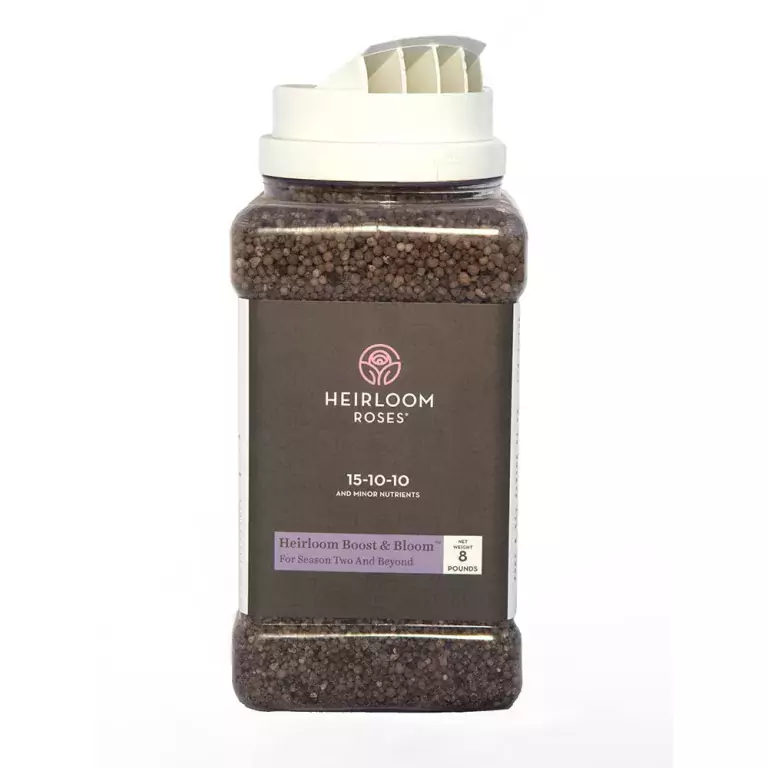
Floribunda Roses – A Burst of Color
If your garden boasts the vibrant hues of floribunda roses, they require more nourishment. Opt for a rose fertilizer with a higher nitrogen content, like a 14-12-10 mix. Nitrogen encourages vigorous foliage growth and abundant clusters of flowers. Apply this fertilizer as the buds form, extending its use until late spring. Your floribunda beauties will thank you with an explosion of color.
Shrub Roses – Hardy and Resilient
Shrub roses, the robust workhorses of the garden, appreciate a different blend. Choose a slow-release granular fertilizer with a higher potassium ratio, such as 5-10-10. Potassium strengthens their resilience against diseases and promotes sturdy root development. Disperse the fertilizer along the shrub’s drip line, allowing gradual absorption into the soil.
Climbing Roses – Reaching New Heights
Climbing roses, with their majestic ascent, require specialized care. A well-balanced fertilizer with added phosphorus (18-14-10) supports their climbing ambitions. This nutrient mix enhances root development and encourages prolific flowering. As they climb, apply the fertilizer evenly around the base, ensuring the roots receive a hearty dose.
The Art of Rose Fertilization – Dos and Don'ts
Now that you know which fertilizer suits your rose companions, let’s talk about application etiquette. Think of it as serving a gourmet meal – presentation matters.
Do:
- Ensure the soil is well-hydrated before administering fertilizer to prevent any risk of root burn.
- Spread the fertilizer evenly around the base, avoiding direct contact with stems.
- Incorporate organic matter like well-rotted compost for an extra boost.
- Follow recommended dosage guidelines to prevent overfeeding.
Don’t:
- Apply fertilizer too close to the stem, as it may cause root damage.
- Overdo it – moderation is vital to prevent nutrient imbalances.
- Forget to water your roses after fertilizing to help nutrients reach the roots.
Organic vs. Synthetic rose fertilizers
The world of rose fertilizers is diverse, offering both organic and synthetic options. Which one deserves a place in your garden toolbox? It depends on your philosophy and soil conditions.
- Organic Fertilizers: Nature’s gentle bounty, organic fertilizers like composted manure, fish emulsion, and bone meal release nutrients slowly, enhancing soil life and promoting long-term health. They’re ideal for eco-conscious gardeners and soils already rich in organic matter.
- Synthetic Fertilizers: These concentrated powerhouses deliver a quick dose of nutrients, ideal for nutrient-deficient soils or roses needing a targeted boost. However, overuse can burn roots and disrupt soil ecology. Use them judiciously and consider combining them with organic mulches for long-term benefits.
Rose Fertilization Schedule in Spring:
Remember, timing is everything! Here’s your roadmap for rose nourishment through spring:
- Mid-spring: As your roses break dormancy, unleash the initial nutritional boost with a high-nitrogen fertilizer (10-6-4 NPK ratio) or a top dressing of alfalfa meal (5-1-2). This kickstarts lush foliage growth and lays the foundation for future blooms.
- Early to mid-summer: Every 2-4 weeks, continue feeding your roses with a balanced fertilizer (10-10-10 NPK ratio) or organic solutions like fish emulsion or kelp seaweed extract. These provide a steady stream of nutrients for continuous blooming and healthy growth.
- Late summer to early fall: Switch to a low-nitrogen fertilizer (5-10-10 NPK ratio) or bone meal as flowering winds down. This encourages strong root development and bud formation for next year’s show.
Adjust this schedule based on your specific soil conditions, weather patterns, and rose variety. A little observation and a gentle touch go a long way in tailoring the perfect feeding regimen for your garden champions.

Organic Fertilizers and Top Dressings: Embracing Nature's Abundance
The garden presents a charming array of natural solutions for those seeking an organic approach. Here are some delicious treats for your roses:
- Compost: This all-star soil amendment provides a diverse blend of nutrients and beneficial microbes. Spread a 2-inch layer around the foundation of your roses during the spring, replenishing it as needed with the changing seasons.
- Coffee Grounds: Abundant in Nitrogen and Potassium, these grounds provide a gradual and sustained nutrient boost. Sprinkle them around the base of your roses or mix them into compost. Remember, coffee is acidic, so monitor your soil pH and adjust if needed.
- Worm Castings: A potent cocktail of nutrients and microorganisms, worm castings are like gold dust for your roses. Apply a thin layer around the base or mix them into the soil during planting.
- Banana Peels: Packed with potassium and phosphorus, these discarded snacks can offer a delightful treat for your roses. Plant them a couple of inches below the surface, encircling the foundation of your plants to experience a gradual nutrient release.
DIY Organic Fertilizers: Feeling creative? Whip up these simple concoctions:
- Nettle Tea: Steep a handful of fresh or dried nettles in a bucket of water for 24 hours. Dilute the tea before applying it to your roses as a nitrogen-rich foliar spray.
- Eggshell Tea: Boil clean eggshells in water for 10 minutes. Let the excellent broth infuse overnight, then dilute and use it as a calcium boost for your roses.
- Banana Peel Smoothie: Blend chopped banana peels with water and molasses. Dilute the mixture and use it as a potassium-rich foliar spray.
Remember, organic fertilizers release nutrients slowly, so adjust your application frequency accordingly
Methods for Fertilizer Application in Spring
Applying fertilizer is not just a task; it’s an art form that can significantly affect your rose garden’s vibrancy. Explore effective methods to ensure your roses get the most out of their spring feeding.
Top-Dressing with Care
Top-dressing is a gentle yet powerful technique to deliver nutrients directly to the soil surface. Spread a layer of well-rotted compost or organic matter around the base of your roses, avoiding direct contact with the stems. This ensures a gradual release of essential nutrients, enhancing the soil structure and water retention capacity.
Water-Soluble Fertilizer Finesse
Water-soluble fertilizers are like a hydrating spa treatment for your roses. Dissolve the recommended amount of fertilizer in water and apply it directly to the soil around your roses. This method ensures rapid nutrient absorption, giving your roses an instant boost. Remember to water thoroughly after application to help the nutrients reach the root zone.
Slow-Release Granules – A Gradual Feast
For those who prefer a set-and-forget approach, slow-release granular fertilizers are the way to go. These tiny nutrient-packed beads break down gradually, providing a consistent supply of nourishment over an extended period. Sprinkle the granules evenly around the drip line of your roses, allowing them to seep into the soil slowly.
A Symphony of Spring for Your Rose Haven
As you embark on your spring fertilization journey, remember that every garden is unique, and your roses have their own preferences. The fertilization schedule, organic recipes, and application methods outlined here offer a diverse toolkit for cultivating robust, thriving roses.
By aligning with the natural cycles of your garden and infusing it with organic goodness, you’re not just feeding your roses – you’re fostering a flourishing ecosystem. So, wear your gardening gloves, embrace the art of nurturing, and watch as your rose haven transforms into a symphony of colors, fragrances, and boundless vitality. Happy gardening!
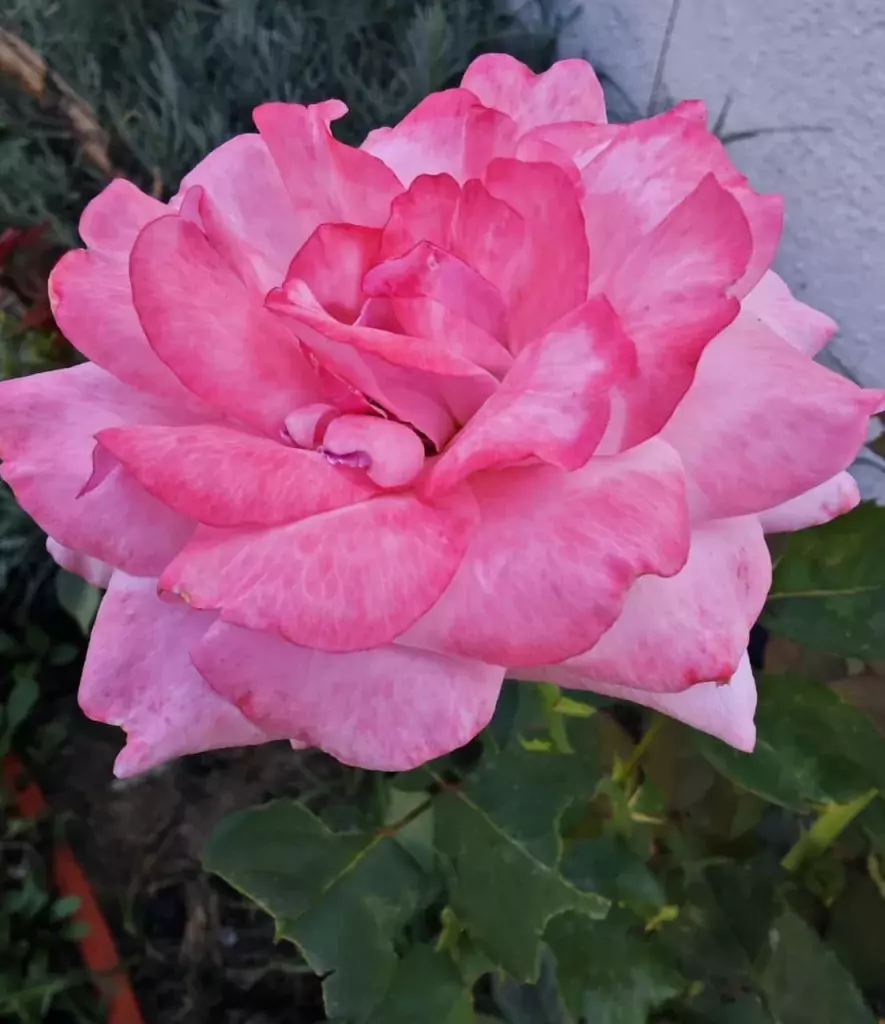
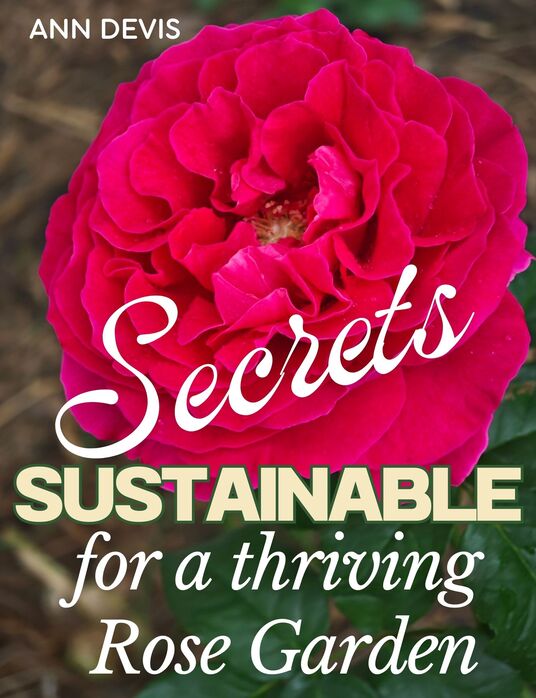
The Organic Rose Revolution: Grow Stunning Blooms, Naturally
- Unlock the secrets of nurturing your roses organically with our guidance on soil health, natural fertilizers, and sustainable pest control methods. Your garden will thrive with eco-friendly care that respects nature’s balance.
- Empower yourself with the knowledge to craft natural remedies for common rose ailments.
- Banish pests from your garden precisely using proven strategies that safeguard your roses without harsh chemicals. Keep aphids, mites, and other invaders at bay while preserving your garden’s natural harmony.
- Explore a world of breathtaking rose varieties carefully curated to captivate your senses and elevate your garden to new heights of beauty.
Recent Posts
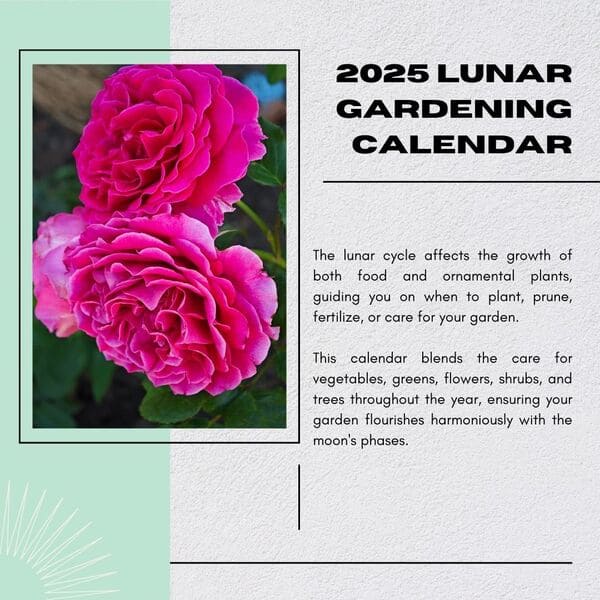
Get Your Free Lunar Gardener's Calendar 2025!
Join the Lunar Gardening Revolution! Subscribe now to receive our exclusive Free Lunar Gardener’s Calendar for 2025. Harness the power of the moon to optimize your planting, nurturing, and harvesting.

